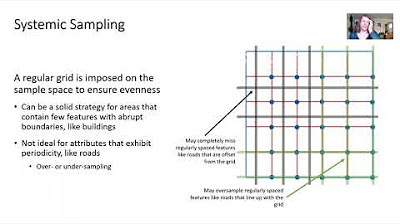Part 1: Airfoil Geometry | How To Choose Airfoil | Airplane Design
Summary
TLDRThis video introduces how to choose an airfoil by framing selection as a series of trade-offs tied to the airplane’s mission—especially stall and cruise speeds. It explains that no single “magic” airfoil exists and highlights the compromise between low drag (good for cruise) and high maximum lift (good for low stall speed). The script then walks through essential airfoil geometry: leading and trailing edges, chord, camber and camber distribution, thickness-to-chord ratio, leading-edge radius, and angle of attack—noting how each parameter influences lift, drag, stall behavior, and pitching moment. Upcoming segments cover forces, moments, and deeper aerodynamic effects.
Takeaways
- 😀 Airfoil selection is a compromise: There's no 'magic' airfoil, and the best choice depends on the aircraft's mission and performance requirements.
- 😀 The design process should start by defining key parameters like stall speed and cruise speed, as these influence airfoil selection.
- 😀 A low drag airfoil may result in a high stall speed, and a high max lift coefficient airfoil typically comes with higher drag. The right airfoil balances both.
- 😀 Increasing the wing area to reduce stall speed can lead to increased parasitic drag, which negates the benefits of low drag airfoils.
- 😀 Understanding airfoil geometry is crucial for understanding its aerodynamic and structural properties.
- 😀 The leading edge is the front of the airfoil, and the trailing edge is the back where the airflow exits.
- 😀 The chord line connects the leading edge to the trailing edge, and its length is termed the 'chord'.
- 😀 The camber line is a curve that defines the upper and lower surfaces of the airfoil, greatly influencing its lift, drag, and pitching moment.
- 😀 Camber can be either front- or rear-loaded, affecting the airfoil’s pitching moment and overall aerodynamic characteristics.
- 😀 The thickness of an airfoil is defined by the thickness-to-chord ratio, which influences lift, drag, and the stall behavior.
- 😀 The angle of attack (AoA) is the angle between the chord line and the oncoming airflow, and it plays a key role in the airfoil's aerodynamic performance.
Q & A
What is the first step in selecting an airfoil for an aircraft design?
-The first step in selecting an airfoil is to define the mission of the aircraft, particularly the stall speed and cruise speed.
Why is selecting the right airfoil a compromise in aircraft design?
-Selecting the right airfoil is a compromise because different airfoils offer different trade-offs, such as between drag and lift, which affect the overall performance of the aircraft.
How does airfoil drag and lift interact when choosing a design for a fast cruising aircraft?
-For a fast cruising aircraft, selecting an airfoil with low drag typically results in a higher stall speed, while choosing an airfoil with a higher lift coefficient decreases the stall speed but usually increases drag.
What are the aerodynamic consequences of increasing wing area to reduce stall speed?
-Increasing the wing area reduces stall speed but also increases parasitic drag, which can counteract the benefits of a low drag airfoil.
What is the role of the camber line in airfoil design?
-The camber line connects the leading and trailing edges of the airfoil and affects the airfoil’s lift, drag, and pitching moment, which are critical for aerodynamic performance.
What is meant by 'local camber' in airfoil geometry?
-Local camber refers to the distance between the camber line and the chord line at any point along the airfoil, with the maximum local camber affecting the airfoil's characteristics.
How does the distribution of local camber affect airfoil performance?
-The distribution of local camber affects both the pitching moment and the lift and drag characteristics of the airfoil, influencing the overall performance of the aircraft.
What does it mean when an airfoil is described as having a 12% thickness to chord ratio?
-A 12% thickness to chord ratio means that the maximum thickness of the airfoil is 12% of the total chord length, which is used to define the airfoil’s thickness.
How does the leading edge radius impact an airfoil's performance?
-The leading edge radius affects the stall behavior and maximum lift coefficient (CL max) of the airfoil, influencing its aerodynamic efficiency.
What is the angle of attack, and how is it defined?
-The angle of attack is the angle between the chord line of the airfoil and the free-stream airflow. It is considered positive when the airfoil’s nose is angled upward relative to the incoming airflow.
Outlines

This section is available to paid users only. Please upgrade to access this part.
Upgrade NowMindmap

This section is available to paid users only. Please upgrade to access this part.
Upgrade NowKeywords

This section is available to paid users only. Please upgrade to access this part.
Upgrade NowHighlights

This section is available to paid users only. Please upgrade to access this part.
Upgrade NowTranscripts

This section is available to paid users only. Please upgrade to access this part.
Upgrade NowBrowse More Related Video

Part 2: Forces & Moment, Read Airfoil Plots | How To Choose Airfoil | Airplane Design

CATIA V5 - DA50 RG AIRCRAFT DESIGN USING GSD CATIA V5| BEGINNER - ADVANCED| PART 1 - WING DESIGN

30: LinkedIn Mutual Connection Search | Systems Design Interview Questions With Ex-Google SWE

System Design BASICS: Horizontal vs. Vertical Scaling

Spatial Sampling & Interpolation

Product Manager Interviews: Success Metrics (Execution & Analytical)
5.0 / 5 (0 votes)